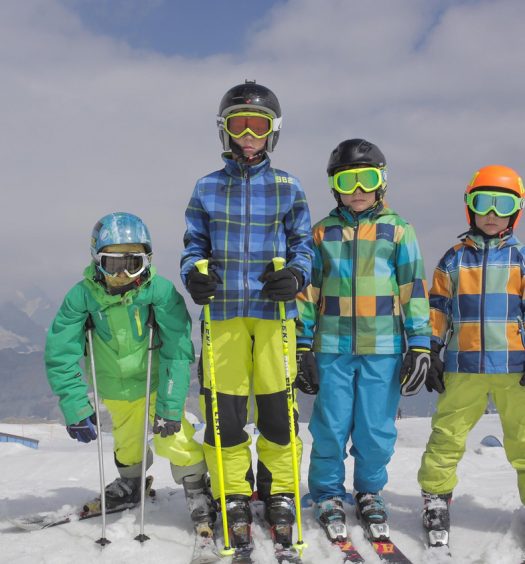Talk of Myoko Kogen typically evokes images of waist-deep pow and more recently, the uncertainty of what’s to come where the PCG development is concerned. But there’s another side to Myoko – one that’s quieter, greener and full of untapped potential. So I caught up with Sam Dean, CEO of Carpe Dean, a tourism strategy and branding company shaping how people experience Myoko year-round.
Sam’s work spans several local ventures – Go Myoko’s English-speaking ski services, Sessions’ dual seasonal venues, the winter-only Grape and Grain bar, the now-Minakami-based M Festival, and Genki Flow, a Japan-made CBD brand. With deep ties to both the local and international community, Sam offers an honest take on how the “off season” might come to shed that tag. From lakeside to forest, we dig into what the green season looks like today – and how it might evolve for future visitors.

Lake Nojiri. Image: Sam Dean
“I first rolled into Myoko with a snowboard and a backpack around 17 years ago, fell hard for the mountain-town vibe, and have always been coming back,” Sam begins.
“Today my family and I split our time between Tokyo and our house we’ve owned in nearby Lake Nojiri for the past eight years. Business-wise, I’m all-in. Carpe Dean helps with tourism strategy and marketing, Go Myoko keeps visitors kitted out from our shop inside Hotel Taiko, and we pour flat-whites and après wines at Sessions by the Pond beside beautiful Imori Pond. We also have Sessions on The Mountain and The Grape and Grain for our winter operations located in Hotel Taiko”.

Image: Sam Dean
Winter aside for now, we’re here to focus on Myoko’s green season. When asked why it’s important to operate Sessions by the Pond despite seemingly far fewer visitors during late spring, summer and autumn, Sam’s focus is immediately centred on community.
“Myoko doesn’t hibernate,” he asserts. “Locals still need a meeting spot, weekend hikers need real coffee and cyclists crave a mid-ride pit-stop. Staying open also gives our mostly-winter staff year-round jobs and lets visitors see that Myoko isn’t just “pow and done” – it’s bird-song mornings, firefly nights and everything in between.”
“…Myoko isn’t just “pow and done” – it’s bird-song mornings, firefly nights and everything in between.”
Will we see the area’s green season experience any real growth in future?
“Absolutely,” says Sam emphatically. “Real estate searches are creeping up, summer occupancy is no longer an afterthought.
“Mountain biking, gravel riding, golf on immaculately quiet courses, wake-surfing and SUP on Nojiri are already drawing Tokyo weekenders; trail running and road cycling clubs are booking group blocks a year out.”
“Existing snow infrastructure flips quickly to summer mode,” Sam continues in describing how a busier green season will look, “so look for lift-served mountain-bike parks, perhaps a beginners’ pump track beside Imori Pond and extended zip-line and ropes courses at Lotte Arai.

Imori Pond. Image: Nathan Eden
“Down at Lake Nojiri, a new marina hub is planned and is already driving wake-surf, foil-boarding and SUP sunrise paddles. Add highland resort-style golf, a well-mapped Shinetsu Five Mountains trail-running loop and evening barrel-saunas, and you have a “gravity vacation” menu that keeps Tokyo week-enders busy from dawn to dusk.”
With the vastly larger portion of winter visitors being those from abroad, Sam offers insight into what the off season numbers look like. “Right now it’s roughly 60% domestic, 40% international, with the latter a mix of tourists and expats,” he says.
“Expat families book lake-view condos for August and digital nomads from Europe stitch 90-day onsen-and-Zoom stints. Cheap package bundles and increasing English media are nudging the ratio up as well.”
Sam’s enthusiasm is unwavered by talk of the PCG investment and sees positives, offering insight on what he views as important for the existing Myoko and Nojiri community.
“Patience Capital Group’s planned ¥200 billion, multi-resort build is slated to open its first hotel wing by 2028. Two hotels, 30-plus F&B and retail units and purpose-built conference halls will lengthen stays beyond weekends, fund bike-path and waste-management upgrades, and – crucially – add staff housing that lets small operators stay open all year.
“The key for independents like us is to plug into the new foot-traffic pipeline while keeping the local flavour intact.”
So what is there to do during Myoko’s so-called “off season”?
Sam points to events such as the hugely popular Lake Nojiri Fireworks Festival of late July, the Shinetsu Five Mountains Trail 110km/100 miler he describes as an “ultra that winds over Myoko, Togakushi and Iizuna”, August’s Joetsu-Myoko Gourmet & Beer Fest in for street food, Kubiki beef burgers and local pints, “and anything spring related to the cherry blossoms.”
Beyond organised event and Sessions by the Pond (at the base of Mount Myoko, offering “craft beer, coffees, wine & epic views” across the pond and towards the mountain towering directly above), Sam’s offered recommendations include “Bashō-en Soba to slurp buckwheat noodles grown on the plains below Myoko, Arrowhead Tavern for lakeside burgers and drink, and Myoko Coffee who have a few venues around town. The one in front of the station has awesome baked goods as well!” And of course, Sam also insists a summer or autumn visit to Myoko isn’t complete without seeing Naena Falls and sampling the famous nagashi somen.

Naena Falls. Image: Nathan Eden
Lastly, after seventeen off seasons behind him, what is Sam’s ideal day off around Myoko and Nojiri?
“Morning espresso at Sessions while Mount Myoko wakes up, a round of golf at one of the many courses in the area, then SUP and a lake swim at Nojiri. Followed by the best burgers and burritos this side of Cali at Arrowhead Tavern by the lake.”
ENQUIRE NOW
 Organise your guided backcountry skiing tour in Japan
Organise your guided backcountry skiing tour in Japan
There are lots of options in Hokkaido and Honshu that can be tailored to the kind of skiing you like and when you plan to come. Answer a few questions and we’ll get back to you with some recommendations.


 Organise your guided backcountry skiing tour in Japan
Organise your guided backcountry skiing tour in Japan



